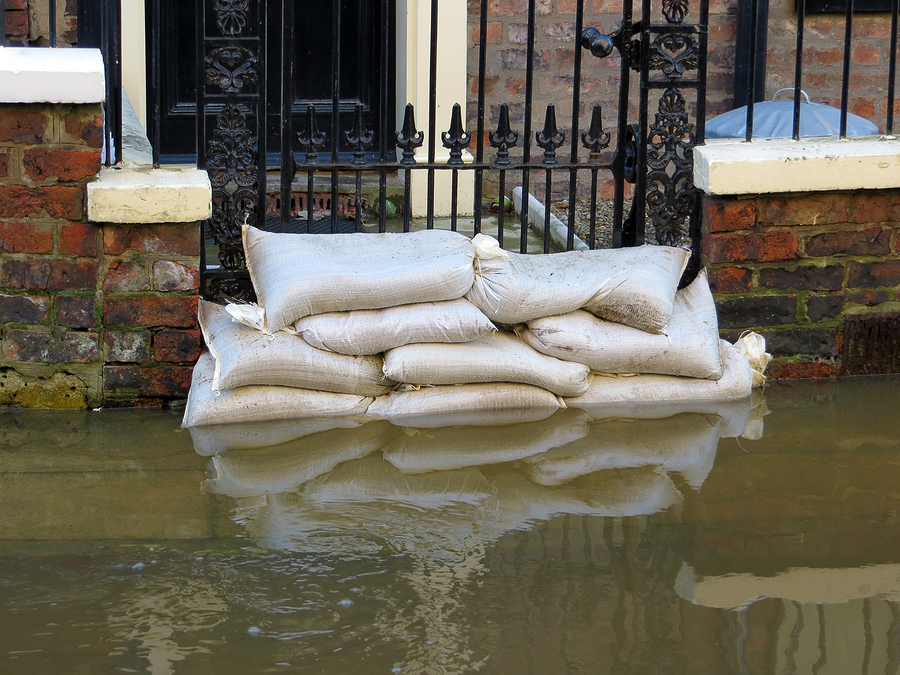by onlinefinancialnewsletters | May 16, 2016 | Personal Protection

Your teenager just got his or her driver’s license and is begging you for a car. You’ve been thinking about buying a new one anyway, so you decide to give him your current ride. After all, an older vehicle should cost him less to insure as well as repair if he gets in an accident. Problem solved, right? Not so fast.
While hand-me-down cars can be money-savers, they also have potential drawbacks. One study conducted by the Insurance Institute for Highway Safety found that 48 percent of drivers between the ages of 15 and 17 who died in crashes from 2008 to 2012 were in cars that were at least 11 years old. Before you gift an older car to your child, ask the following questions.
- How safe is it?
Older cars may lack the safety features available on new models. While front-collision air bags have been required on all cars produced since 1998, electronic stability control didn’t become standard until 2012. Side-curtain air bags—which can be lifesavers in rollover crashes—are fairly rare even in cars purchased this decade.
Review the owner’s manual to determine the car’s safety features. You may want to check out crash-test ratings as well. You can find many on the Insurance Institute of Highway Safety website.
- Has your teen driven it?
While the aforementioned study found that 29 percent of the fatally-injured teenagers had been driving a small car—and 35 percent operating mid-size vehicles—bigger isn’t necessarily better. In fact, handing down a car that your teen has already been driving regularly is a more important consideration than size.
For example, if your daughter is used to driving a small car and you give her your large SUV because you think it will be safer on icy roads, you could actually be setting her up for an accident due to the difference in blind spots and turning ratios. On the other hand, a teen who learned to drive in a large car may not be able to do so as safely in a compact vehicle.
- Is it in good mechanical condition?
If you’ve been diligent about maintenance, you’re probably confident in your car’s condition. However, it makes sense to have a mechanic look it over before you hand it down to your child. A review of the vehicle’s systems will cost you, but that’s a small price to pay for the peace of mind you can have knowing your teen won’t be stranded due to engine trouble.
- Will it really be affordable to insure?
Teenagers pay some of the highest insurance premiums due to their minimal driving experience. Certain cars—such as those that are more valuable or are expensive to repair—will bump the price of their auto insurance up even more. Ask your insurance agent for a quote on the hand-me-down make and model.
Is your teen about to become a licensed driver? Contact us today to discuss adding him or her to your insurance policy or to explore other car insurance options.
by onlinefinancialnewsletters | May 2, 2016 | Personal Protection

Identity theft is increasing dramatically in the U.S. today. According to the Federal Trade Commission (FTC), consumers reported more than 490,000 incidents in 2015, a startling 47 percent increase over the prior year’s number of reported identity theft crimes. While identity theft can happen to anyone, certain activities—such as posting personal information on the Internet or losing your wallet—can increase your risks. Improper disposal of paper documents can also be an issue. Consider these tips on what you need to shred and what you can safely recycle before your next desk or filing cabinet purge.
- Shred anything containing your social security number. This is the holy grail of personal information in the eyes of would-be identity thieves. If they get their hands on it, they can open credit cards and fake checking accounts in your name. Your social security number may be included on employer paperwork, medical bills, health insurance cards and statements, credit card, banking and loan statements and more.
- Shred your bank and mortgage statements. Paper statements sent for checking, savings, personal lines of credit, your mortgage and other loans will include your account information and—in many cases—your social security number. Experts advise saving these for three to seven years for tax purposes, but after that time has elapsed you should shred and recycle them. For maximum protection, shred everything you receive from your bank before putting it in the recycling bin—even if it’s just a policy change document or new product advertisement.
- Shred your bills. From gas and electricity to water and trash collection, utility and service bills often contain sensitive information and may even include your social security number. Once you’ve reviewed the accuracy of the charges, shred and recycle them.
- Shred anything with your signature. Did you have to sign the receipt at the drycleaner in order to pick up your order? Did you write an old-fashioned paper letter and then decide not to send it? A good rule of thumb is to shred anything that has your signature on it before putting it in recycling.
- Recycle standard receipts. Receipts that don’t include your signature can be tossed in the recycling bin without shredding. This is true even if they contain the last four digits of your credit card number. However, receipts from ATMs for deposits and withdrawals should be retained for two years—according to experts. You can then recycle them.
- Recycle junk mail, catalogs and magazines. Coupon books, sale’s flyers, catalogs and other junk mail can be recycled without shredding. The only information they contain is your address. The same goes for magazines after you’ve read them.
Keep in mind, cross-cut or diamond-cut shredders are better than those that simply turn documents into long strips of paper that are easy for identity thieves to reassemble. If you don’t want to invest in your own equipment, check your local government website for a shredding program or secure document recycling event. Some banks also hold periodic community shredding events.
by onlinefinancialnewsletters | Mar 30, 2016 | Personal Protection

In order to legally operate your motor vehicle in the U.S., you must have a car insurance policy in place. The minimum requirements for bodily injury and property damage liability vary by state and must be considered when selecting insurance coverage. These minimums won’t change as your car ages, but the additional coverage you choose to purchase may. Consider making these adjustments as your vehicle becomes older.
When Your Car is New…
If your car still has that new car smell, your best option will be full coverage insurance. A full coverage policy will cover the liability minimums required by your state as well as collision and comprehensive. Comprehensive means if something that’s not your fault (hail, vandalism, etc.) damages your vehicle, your insurance policy will reimburse you up the value of it (minus the deductible, of course). Collision provides the same coverage if something happens that is your fault (slamming into a telephone pole, etc.).
Full coverage is required under most auto loans. However, even if you paid cash for that brand new vehicle, and own it outright, full coverage insurance still makes sense as protection for your investment. According to Kelley Blue Book the average new car price is $33,543.
You may also want to purchase gap insurance. By some accounts, new cars lose 11 percent of their value when you drive them off the lot and 15 to 25 percent more each year. If something happens to your car and your auto insurance policy will only reimburse current value, gap insurance will make up the difference between that sum and what you still owe your lender.
When Your Car is Two to Five…
By now you’ve probably paid off your auto loan (or are close to doing so), so you can ditch the gap insurance if you purchased it. But don’t drop comprehensive and collision coverage just yet. Depending on the original value of your car, it may still be worth more than you’re willing to lose in the even that it’s totaled.Instead, consider adjusting the deductible on your policy. Doing so will lower your annual premium, without the need to sacrifice full coverage.
When Your Car is Six to 11…
If you’ve been itching to get rid of that full coverage, you may now be able to safely do so. Determine the viability of your plan by researching how much your car is currently worth. You can use resources like Kelley Blue Book to do so. Once you know your vehicle’s value, subtract your deductible. The resulting figure is the amount your insurance would pay you (if you have comprehensive and collision) if your car is totaled. Can you afford to lose that much? Is the amount you’ll save each month worth the risk? If you can answer yes to those questions, you might be okay with liability coverage alone.
When Your Car is 12 or Older…
If you’re still paying full coverage at this point, the value of your vehicle may no longer be worth the burden of the higher premium. However, if you’re reluctant to drop to liability insurance alone, talk to your agent about losing collision coverage (which tends to be most expensive) and keeping the comprehensive as protection against events like tornados and theft.
Whether you’re buying your first car or driving one that’s 15 years old, we have policies to fit your needs. Give us a call today for answers to all of your automobile insurance questions.
by onlinefinancialnewsletters | Mar 21, 2016 | Personal Protection

It’s no secret that household water leaks are bad for the environment. According to the Environmental Protection Agency (EPA), the average household leaks more than 10,000 gallons of water every year. To put that into perspective, your own home may be wasting enough water annually to wash 270 loads of laundry! Ten percent of homes have leaks that waste 90 or more gallons of water per day.
These leaks are also bad for your wallet. Fix them before they cause additional damage and you could save 10 percent on your water bills by the EPA’s calculations. Allow them to get worse—which could lead to mold and water damage to fixtures and flooring, and your repair costs could be in the thousands. Fortunately, a simple maintenance plan is all you need to prevent the most common household leaks in the first place.
Every Day…
Listen for running water in your bathroom. Toilet tanks that refill continuously can seriously affect your water bill. Replace assemblies and cut-off valves as needed.
Every Year to Twice a Year…
Inspect the cabinets under your sinks at least once a year. Look for dripping water and evidence of larger leaks. You should pull out your dishwasher and inspect the floor beneath it for water damage as well. Repair any issues you discover.
Check the plastic hose that connects your refrigerator’s ice maker to the water line at least once a year. If it’s discolored or cracked, replace it. If you never use the icemaker feature, consider leaving it unconnected.
Examine your home’s pipes, looking for signs of condensation and corrosion. Cracked or warped flooring may also be evidence of a leak.
Inspect your water heater annually. Corrosion, bulges in the tank and leaks are all issues which will require repair. Hire a professional to check the anode rods.
Hire a professional to inspect your HVAC unit every year. Clogged drain pans in attic air handlers and radiator leaks can cause costly damage to the walls, floors and ceilings of your home.
Clean your gutters every spring and fall to prevent overflow. Make sure downspouts are directing water away from your house to protect your basement and foundation.
Every Five Years…
By some calculations, washing machine failures are the costliest water-related insurance claims. Change out your washing machine hoses every five years and, if possible, use a reinforced steel-braided variety rather than rubber. If you’re going to be away from home for an extended time, consider turning off your washing machine’s water supply.
Even with the best maintenance, accidents may happen. Water detection alarms can alert you to possible leaks in damage-prone areas including bathrooms and basements. Some will even call your mobile phone to notify you of a leak if you’re not at home. Basic models can cost less than $20; the most advanced can set you back $300 or more—but that’s still a lot less than many major home repairs.
by onlinefinancialnewsletters | Jan 26, 2016 | Personal Protection

Mother Nature can throw one heck of a punch. And as residents on the East coast learned yet again with the winter storm Jonas, you don’t want to be on the receiving end of her wrath. Unfortunately, she seems to be striking out more often than ever, drenching parts of the U.S. in a series of extreme precipitation events that lead to flooding—the most common, and most costly, form of natural disaster according to FEMA. In fact, over the past several years, about 60 percent of all declared disasters involved flooding.
Just because your home has never flooded in the past does not mean it won’t in the future. According to FEMA, a home in a high-risk flood area—termed a Special Flood Hazard Area or SFHA by the government—has a 26 percent chance of flooding during a 30-year mortgage term. However, 25 percent of all flood insurance claims paid by the National Flood Insurance Program (NFIP) are for properties outside of SFHAs.
If your home happens to flood, insurance may be all that’s standing between your savings and financial ruin. According to the NFIP, just a few inches of water can cause tens of thousands of dollars of property damage. In fact, from 2010 to 2014, the average residential flood claim was more than $42,000. And you can’t count on your homeowner’s insurance policy for assistance.
What is Flood Insurance?
A supplementary policy used in conjunction with homeowner’s insurance, you can purchase flood insurance through your insurance agent from the NFIP. If you live in a moderate to low-risk area, premiums start as low as $129 per year for your home and its contents. Premiums for SFHA areas are obviously higher. While flood insurance is not required for everyone, you’re required to purchase a policy if your home is in a high-risk area and you obtained your mortgage through a federally regulated or insured lender.
What Does Flood Insurance Cover?
Flood insurance from NFIP covers your home and its foundation, the electrical and plumbing systems, central air and heating equipment, water heaters, large kitchen appliances, window blinds and permanently installed carpeting, paneling, wallboard, bookcases and cabinets. If you live in a low-risk area and have a preferred risk policy—or have purchased additional personal contents coverage in a high-risk area—the insurance will cover your personal belongings (clothing, electronics and furniture), curtains, portable appliances, carpets not included in the building coverage, washers and dryers and freezers.
What Doesn’t Flood Insurance Cover?
A NFIP flood insurance policy does not cover damage caused by moisture, mildew or mold. It also does not cover currency, precious metals or valuable papers. Additionally, any belongings outside the structure are not covered (including cars), nor are temporary housing expenses or financial losses caused by interruption of a home business. Coverage is limited in basements regardless of zone.
You can determine whether you’re in a low or high-risk flood area by reviewing the flood maps at FEMA’s Flood Map Service Center or by consulting with your insurance agent. Don’t take a chance with Mother Nature. Talk to your agent about obtaining flood insurance today. There’s typically a 30-day waiting period before policy purchase and beginning of coverage.
by onlinefinancialnewsletters | Jan 14, 2016 | Personal Protection

If you believe you’ll never experience a home fire, the odds are against you. The NFPA Fire Analysis and Research Division states Americans can expect to average a home fire every 15 years or five fires in their lifetime. While most of these fires will be small, cause little to no damage, and go unreported, you have a one in four chance of experiencing a home fire that requires fire department assistance.
Fortunately, you can improve your family’s chances of surviving—and protect your structure and other belongings—by following these tips:
Cook with care – Never leave the kitchen while you are frying, grilling or broiling food. Additionally, do not leave items on or in your oven to simmer, bake, roast or boil while you’re away from home. If you must leave—even to run to the store or pick up your kids from school—turn off the stove.
Don’t crowd space heaters – Space heaters need exactly that: plenty of space. Whether fixed or portable, position your space heater at least three feet from anything that is flammable. Additionally, always turn off your space heater when you leave the room or go to sleep.
Quit smoking ASAP – While cooking equipment is by far the leading cause of home fires, smoking materials cause the most home-fire deaths. If you must smoke, do so outside whenever possible. Additionally, you should always utilize a sturdy, deep ashtray (whether inside or out) and never smoke in bed.
Hide matches and lighters – If you have children in your home, keep all matches and lighters out of their reach. Even better, store them in a cabinet with a childproof lock.
Inspect all electric cords – Carefully examine all the electric cords in your home, from the ones attached to your electronic equipment and kitchen appliances to the extension cords you use in your garage. Never use a cord that is cracked or damaged, has a broken plug, or sits too loosely in the outlet. Replace it instead.
Never leave candles unattended – Place candles at least one foot away from anything that can burn. Never leave candles burning when you leave a room or go to bed or unattended around children or pets.
Create a fire escape plan – Make sure your family is ready should a home fire occur. Create an escape plan for every room in your home. Have a fire drill to practice your escape at least twice every year.
Install (and maintain) smoke alarms – From 2007 to 2011, 37 percent of home fire deaths occurred when no smoke alarms were present. Twenty-three percent occurred when smoke alarms failed to operate. Smoke alarm failures are usually the result of missing, disconnected or dead batteries.
Make sure you have at least one smoke alarm on every level of your home as well as inside every bedroom. For the best protection, the NFPA recommends homeowners use combination ionization and photoelectric alarms. You should test every alarm at least once per month, change out batteries at least once a year, and replace smoke alarms every 10 years.
While even a small home fire can be disconcerting, a larger event could destroy everything you own. Whether you need a fire insurance policy or want to review your coverage, contact your insurance agent today.







Recent Comments